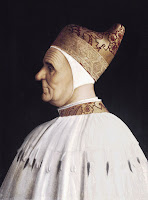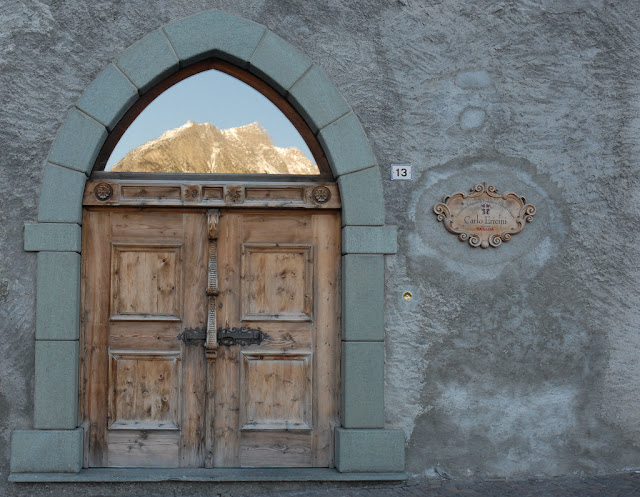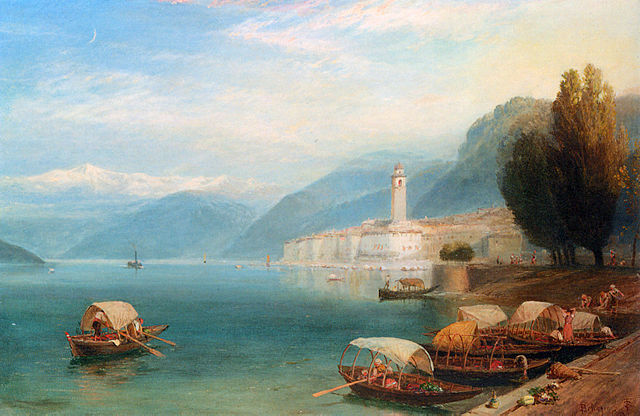Venice - Doge's Palace and Bridge of Sighs
Day 9 & 10 Venice - Doge's Palace and Bridge of Sighs
Doge was the highest official of the republic for more than 1,000 years. From the 8th -12th century a doge was the symbol of the sovereignty of the Venetian state. In the 14thC the hierarchy of Venice decided that instead of a fortress, the doge deserved a grand palace - a beautiful Venetian Gothic building befitting the city's new wealth and power. Begun in 1301, the palace was not completed until 1450. It is recognized for the light and airy first and second floors - another nod to their not needing nor wanting a fortified castle.
If you scan across the 2nd floor columns (far left in the photo) you will see two soft pink ones among the white. The Doge would stand here to announce a death sentence. The condemned prisoner, who would be standing between the St. Theodore and The Lion columns near the basin, would be looking across St. Mark Square to the Clock Tower which would be counting down the minutes to his death.
The capitals of the lower colonnade are decorated with historical and biblical scenes. The photo below shows "Noah's Drunkenness" - Noah with a vessel of wine, one son covering his nakedness.
Porta della Carta
The main visitor entrance to the palace is this beautiful Byzantine gate erected in 1438. Squeezed in between the palace and the basilica, it leads directly to the palace courtyard. On the plinth is a relief depicting a Doge kneeling before the Winged Lion. Long ago, the gate also served as the place where important announcements were posted to be read by the citizens.

Enjoy these videos of Doge's Palace.
Doge's Palace
"Venice, its temples and palaces did seem like fabrics
of enchantment piled to heaven."
Percy Bysshe Shelley
Doge Giovanni Mocenigo 1478-85
"Venice, its temples and palaces did seem like fabrics
of enchantment piled to heaven."
Percy Bysshe Shelley
Doge Giovanni Mocenigo 1478-85
Doge was the highest official of the republic for more than 1,000 years. From the 8th -12th century a doge was the symbol of the sovereignty of the Venetian state. In the 14thC the hierarchy of Venice decided that instead of a fortress, the doge deserved a grand palace - a beautiful Venetian Gothic building befitting the city's new wealth and power. Begun in 1301, the palace was not completed until 1450. It is recognized for the light and airy first and second floors - another nod to their not needing nor wanting a fortified castle.
If you scan across the 2nd floor columns (far left in the photo) you will see two soft pink ones among the white. The Doge would stand here to announce a death sentence. The condemned prisoner, who would be standing between the St. Theodore and The Lion columns near the basin, would be looking across St. Mark Square to the Clock Tower which would be counting down the minutes to his death.
The capitals of the lower colonnade are decorated with historical and biblical scenes. The photo below shows "Noah's Drunkenness" - Noah with a vessel of wine, one son covering his nakedness.
Porta della Carta
The main visitor entrance to the palace is this beautiful Byzantine gate erected in 1438. Squeezed in between the palace and the basilica, it leads directly to the palace courtyard. On the plinth is a relief depicting a Doge kneeling before the Winged Lion. Long ago, the gate also served as the place where important announcements were posted to be read by the citizens.
Doge Palace Courtyard

Foscari la dei Giganti
The Giant's Staircase is where the doges were crowned. Statues of Mars and Neptune.
Sala de Senato
One of many ornate meeting rooms.
Bridge of Sighs
"I stood in Venice on the Bridge of Sighs, a palace and a prison on each hand." Lord Byron
This lovely bridge with the delicate window panes had a not-so-lovely purpose. Built in 1600, the white limestone footbridge was used to connect the palace to the prison. As prisoners crossed the bridge to their cell, they would stop at the window, sigh, and catch their last glimpse of freedom.
Enjoy these videos of Doge's Palace.
Rick Steves
Curious Traveler
https://youtu.be/6mEs_bH4n40
Photo credits in order:
1. Public Domain
2. https://flic.kr/p/pa5gQ2
3. https://pixabay.com/images/id-3545180/
4. -
5. https://flic.kr/p/ax9MVV
6. https://flic.kr/p/22vGmmA
7. https://flic.kr/p/YsZ12j
8. https://flic.kr/p/Zto1ZE
9. https://flic.kr/p/2CRps
1. Public Domain
2. https://flic.kr/p/pa5gQ2
3. https://pixabay.com/images/id-3545180/
4. -
5. https://flic.kr/p/ax9MVV
6. https://flic.kr/p/22vGmmA
7. https://flic.kr/p/YsZ12j
8. https://flic.kr/p/Zto1ZE
9. https://flic.kr/p/2CRps











Comments
Post a Comment